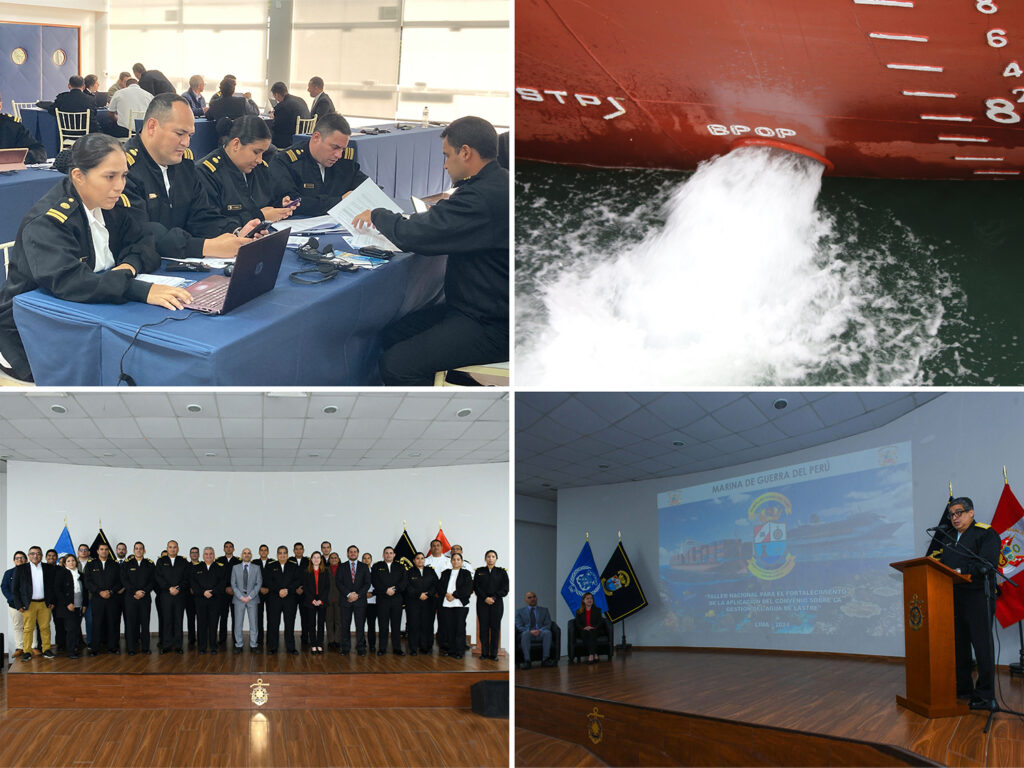By :Raúl Villa Caro
Secretary of EXPONAV
The increasing difficulty of maneuvers, created in large part by ships that do not stop growing in length, means that pilots have to add, to their seamanship expertise, all the aid they can use to ensure that docking services finish successfully.
The increasing difficulty of maneuvers, created in large part by ships that do not stop growing in length, means that pilots have to add, to their seamanship expertise, all the aid they can use to ensure that docking services finish successfully.
Elements to help decision making:

To carry out their services, pilots rely on technological aids, both external and their own. Among the external ones, some are available on board ships, such as Doppler indicators (speed meters), while others are found on docks and terminals in the form of laser indicators that provide very precise readings of speed and distance to the dock.
Regarding personal aids, the PPU consoles (Pilot Portable Unit) stand out, which the pilots themselves usually carry on board, although there are already modern ships that have their own very precise equipment, which replaces them.
Monitoring of docks and ports:

There are advanced and precise docking assistance systems that allow a series of data to be monitored on port docks that facilitate approach and docking maneuvers, which represents a significant improvement for the pilot and the captain.
Main advantages of these systems
Among the main advantages of these systems, which are based on the use of laser technology to obtain exact and instantaneous positioning readings, the possibility of optimizing times and improving efficiency in docking and undocking maneuvers stands out, while at the same time Safety increases and the risk of accidents in operations is reduced.
PPU, portable pilotage unit:

PPUs are not new systems, although their use has really become established in recent years among Port Pilot Corporations in Spain, having currently become a very important work tool for pilotage tasks. In any case, for example, in the case of the Ferrol pilots, they have been using these consoles for 17 years, which are of great help for the maneuvers of large gas vessels at the Mugardos LNG (liquefied natural gas) terminal.

In essence, a PPU is a lightweight system designed so that the pilot can carry it with him (in a small backpack) at the time of boarding, and can install it quickly (currently in less than a minute).
The console in the oldest equipment
In the oldest equipment, the console was made up of a pair of GPS antennas, separated by a bar, which, using two magnets, could be attached to the ship; but the most modern systems have a battery and a universal connector that, attached to the ship in its intended place (pilot plug), captures the information from the AIS (system that transmits the position and identification of the ship) and provides the console with the necessary information. so that the pilot can follow the maneuver remotely from any part of the ship (some models even connect the PPU with a mobile phone or smart watch)
The PPU has the ability to predict
The PPU intuitively reports the position, speed, course, and turn of the vessel; And if that were not enough, it has the ability to predict how the ship will behave in the next minute (or two minutes, or three… or whatever is programmed) so that the pilots can have a projection at all times. of the ship’s course and know how it will behave and at what distance it will pass obstacles or docks if the current course and speed are maintained
Reproduces the silhouette of the ship
The screen, among many other data, reproduces the silhouette of the ship, marking its exact position (without the margin of error of GPS signals), and that expected for the following minutes (as programmed, for example, in the next five minutes, in fractions of a minute).
Night maneuvers
It is a very useful tool that allows the ship to alter its course if necessary, and which gains great importance in night maneuvers or maneuvers with reduced visibility due to weather conditions.
Docking places
In this regard, it should be noted that there are docking places, such as the Mugardos LNG terminal, where due to the difficulty of the maneuver, the Maritime Captaincy requires the presence of two pilots, of which one usually attends to navigation. visual (lights, navigation markings, etc.), and the other to electronic navigation based on the PPU.
Read more :
Raúl Villa Caro writes:Deus, the mastermind behind Supertanker
Raul Caro write: Trade winds, Sea of Ladies and Manila Galleon




